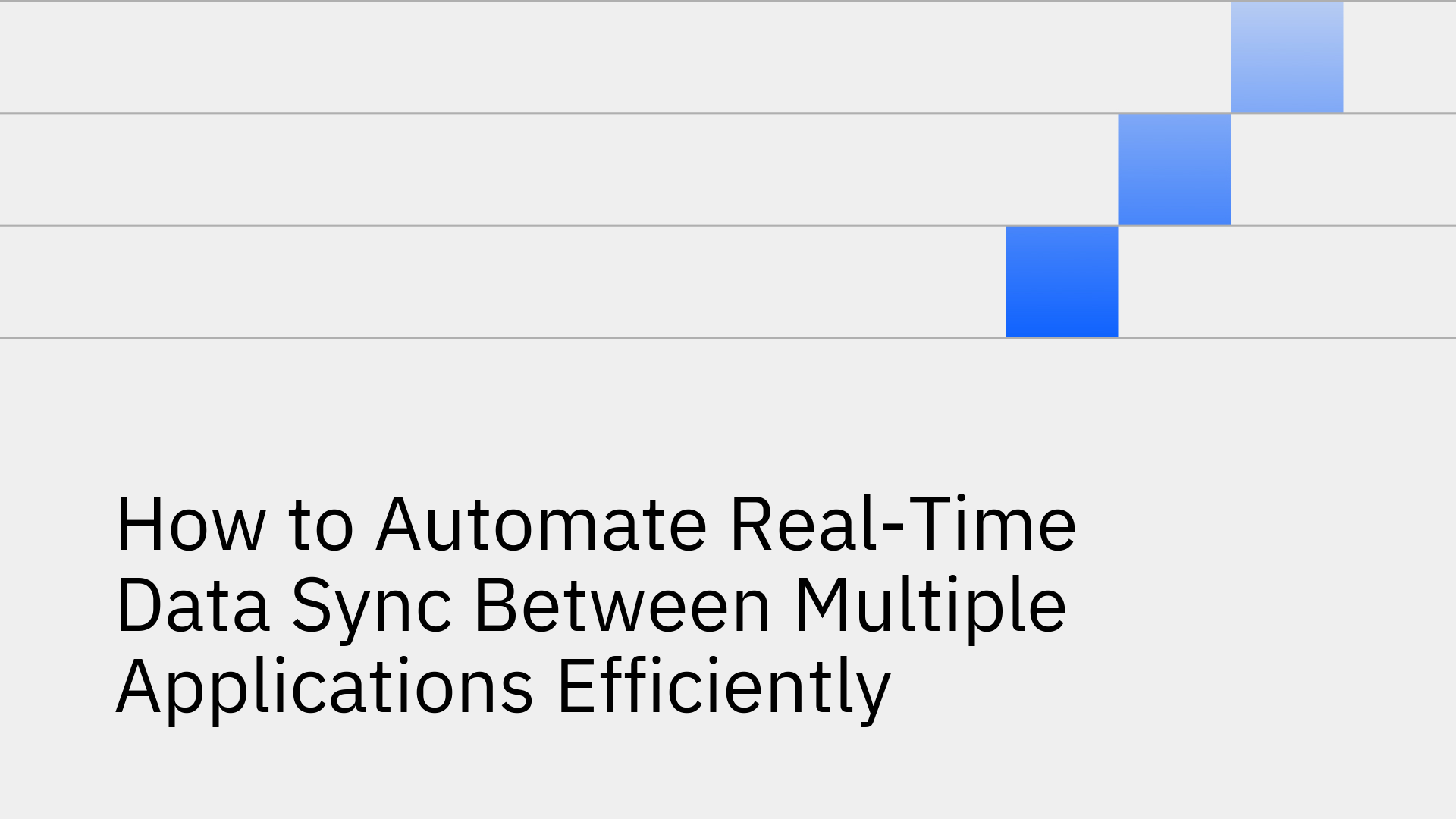
In modern enterprises, data is fragmented across a growing stack of specialized applications. Your customer data lives in a CRM like Salesforce, financial records are in an ERP like NetSuite, and product usage data resides in a production database like PostgreSQL. This separation creates data silos, leading to operational inefficiencies, inconsistent reporting, and poor decision-making. The core technical challenge is not just moving data, but ensuring it is synchronized across all systems consistently, reliably, and in real-time.
Automating data synchronization is critical for maintaining operational velocity and a single source of truth. However, traditional methods like batch ETL jobs, custom scripts, and generic iPaaS solutions often fall short. They introduce latency, are brittle to maintain, and struggle to handle the complexities of true bi-directional data flow. This article details the technical challenges of data synchronization and outlines an efficient, modern approach to automating real-time, two-way sync between multiple applications.
Attempting to sync data between applications automatically without the right architecture introduces significant technical problems that can undermine data integrity and consume valuable engineering resources.
To address these challenges, organizations typically consider several types of sync technologies, each with distinct technical trade-offs.
For mission-critical processes that depend on data consistency—such as a two-way sync between a CRM and an ERP—a purpose-built platform is the only approach that guarantees reliability and performance at scale.
An effective platform for real-time data synchronization must provide a specific set of technical capabilities designed to ensure data integrity and operational efficiency.
This is the cornerstone of a modern sync solution. True bi-directional sync is not merely two one-way syncs running in parallel. It is a stateful system that understands the relationships between records across systems and includes built-in conflict resolution logic to handle simultaneous updates gracefully. This ensures that a change made in any connected system is accurately propagated to all others without creating duplicates or overwriting critical information.
For operational systems, "real-time" means now. A modern sync platform should be architected to capture and process changes in milliseconds. This is achieved through event-driven architecture, such as using webhooks or Change Data Capture (CDC), rather than polling APIs on a schedule. This capability is essential for use cases where immediate data availability impacts business outcomes.
Sync failures are inevitable. The difference between a reliable and an unreliable system is how it handles them. A robust platform provides:
An enterprise-ready solution must scale from thousands to millions of records without manual intervention. This requires smart management of service quotas and API rate limits. Advanced platforms dynamically adjust their sync behavior based on traffic and resource budgets to prevent hitting API limits, ensuring smooth operation even during periods of high data volume.
Modern data solutions should empower both technical and non-technical users. A no-code setup allows RevOps or business analysts to configure and manage syncs in minutes. Simultaneously, pro-code options like configuration-as-code allow engineering teams to manage sync configurations in a Git repository, enabling version control, peer reviews, and CI/CD for data integrations.
Let's consider a common and high-value use case: establishing a bi-directional sync for Salesforce with a PostgreSQL database. The goal is to empower developers to work with CRM data using familiar SQL while ensuring the sales team always has real-time data in Salesforce.
The Inefficient Way (Custom Code): An engineering team would spend weeks or months building a custom pipeline. This involves:
Account, Contact, and Opportunity data.The Efficient Way (Using a Purpose-Built Platform): A purpose-built sync platform can address this exact problem, reducing a months-long project to minutes. The process is declarative and requires no code.
# Example of a declarative configuration for a sync
source:
type: salesforce
object: Account
destination:
type: postgres
table: salesforce_accounts
direction: two-way
sync_frequency: real-time
field_mappings:
- source: Name
destination: account_name
- source: AnnualRevenue
destination: annual_revenue
- source: OwnerId
destination: owner_id
With this approach, the platform handles all the underlying complexity. It performs the initial data backfill and then listens for changes in real-time from both Salesforce and Postgres, propagating updates in milliseconds. This ensures data consistency and frees the engineering team to focus on value-added work. Many platforms provide this functionality for numerous CRMs and databases, including HubSpot, NetSuite, Snowflake, and Amazon RDS.
Adopting a purpose-built platform for real-time, bi-directional sync delivers compounding technical and operational benefits.
In today's competitive landscape, the ability to operate on real-time, consistent data is no longer a luxury—it is a necessity. By moving away from inefficient legacy methods and embracing modern, purpose-built sync platforms, organizations can unlock new levels of efficiency and build a truly data-driven operational backbone.